
Google Trends data shows there’s been a significant upturn in search activity around affiliate marketing in Canada over the past five years:
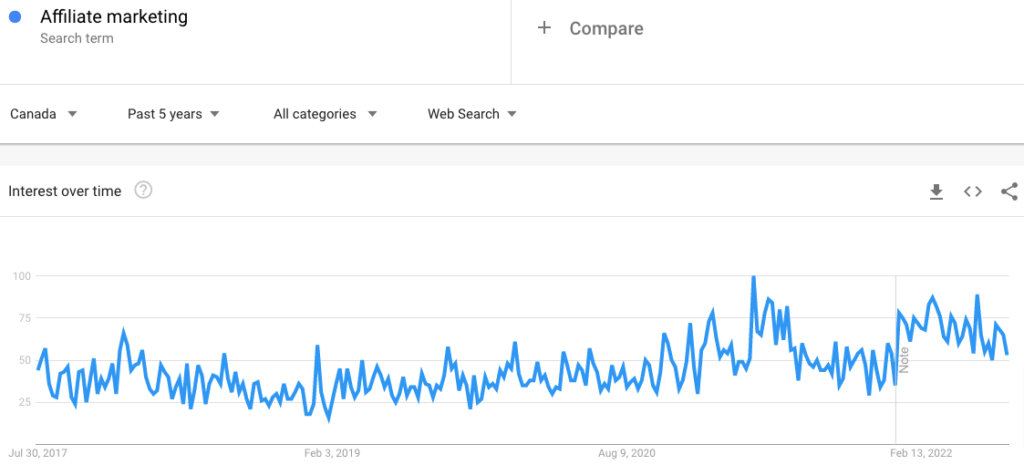
When you dig into the numbers, it’s easy to see why becoming an affiliate marketer is an attractive prospect for many Canadians.
For starters, they love working from home.
According to the Angus Reid Institute, since the start of the pandemic, Canadians who “WFH” are more likely to report improvements in their:
- Work/life balance
- Relationships with their spouse
- Overall life
What’s more, many Canadians like the thought of being their own boss, with a 2021 survey from Freshbooks predicting that 30% will start their own business, go freelance, or become self-employed in the following two years.
With that in mind, in this guide we’re going to explain what affiliate marketing entails and how to start affiliate marketing in Canada…
What Is Affiliate Marketing?
Affiliate marketing is a type of digital marketing.
It provides a way for content creators to make money online by promoting products or services as part of an affiliate program.
Affiliate marketers are rewarded with a commission for delivering a specific “action.” Typically, that action is to drive a sale. But it could also be to encourage sign-ups or app installations (or something else).
How Does Affiliate Marketing Work?
Affiliate marketing works like this:
- The affiliate marketer recommends an affiliate product via their blog, newsletter, or social channels.
- They include a unique affiliate link that directs potential customers to a landing page on the advertiser’s website.
- A customer clicks the unique link and performs the desired action (e.g. buying a product or downloading an app).
- The affiliate network or advertiser confirms the action has taken place and tracks the source of the conversion.
- The affiliate marketer receives an agreed commission.
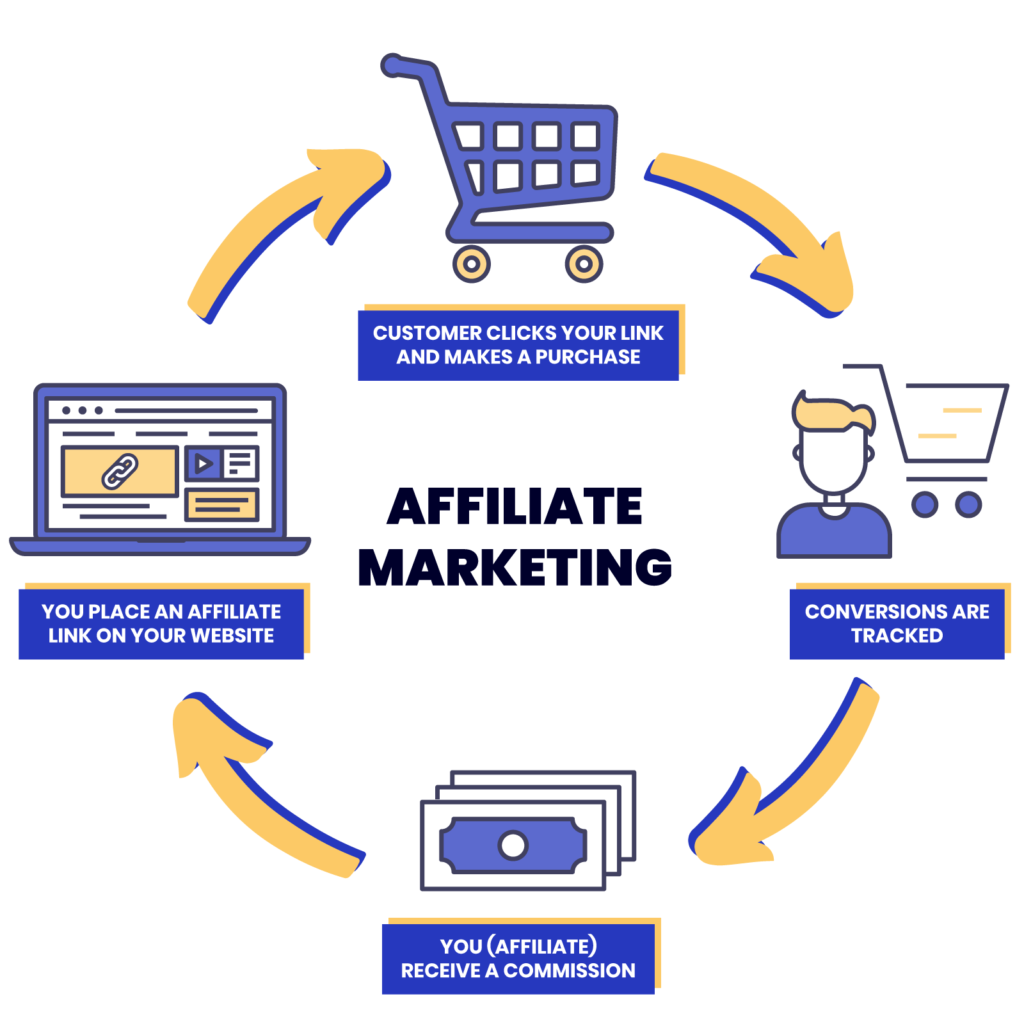
Commission rates vary from one affiliate program to another.
Most pay a fixed fee or percentage of every sale, with percentage-based commissions typically ranging from 5% – 50%+.
Alternatively, some affiliate programs pay recurring commissions, whereby affiliate marketers keep earning commissions for as long as the customer keeps paying for the product or service.
(N.B. For the best commissions, check out our roundup of 29 high-paying affiliate programs.)
Pros and Cons Of Affiliate Marketing
Full disclosure:
At Authority Hacker, we’re massive fans of affiliate marketing.
We’ve been doing it for years across countless niches, and we think it’s a fantastic way to build an online business.
But no business model is perfect for everyone, so here’s our take on the pros and cons of affiliate marketing:
Affiliate Marketing Pros:
It’s quick to start: Affiliate sites can be built and populated with content in a couple of weeks (provided you’re happy to put the hours in).
The setup costs are negligible: For most affiliate marketers, it only costs a few dollars to buy a domain name and launch an affiliate website. You can even do affiliate marketing without a website, although we wouldn’t recommend it.
No worrying about customer service: Because the customer purchases from the advertiser, you don’t have to handle transactions, ship products, or deal with customer support.
Reach customers worldwide: You don’t have to target an exclusively Canadian target audience because customers anywhere can access your content.
Generate income in your spare time: Once you’ve done the hard work, you can earn money passively. That’s the dream!
No limit to your earning potential: The more content you create, the more backlinks you build, and the more affiliate products you promote, the more money you’ll make.
Work to your own timetable: Affiliate marketing offers total flexibility. Want to work from abroad or take a bunch of time off? Do it, because you’re the boss!
Huge choice of affiliate programs: According to Rakuten, 81% of advertisers use affiliate marketing as part of their digital marketing strategy, so there’s no shortage of affiliate offers waiting for you.
Affiliate Marketing Cons:
It takes time to build a revenue stream: Don’t expect to generate income overnight. It could be months to start making money online, and years until you see a decent return.
Competition is fierce: The affiliate marketing world can be cut-throat, with thousands of other affiliates battling it out for referral purchases.
No control over the bottom of the sales funnel: Once a customer clicks your unique link or banner ads, there’s nothing more you can do to close the deal. If the retailer’s website craps out or looks terrible, you’ve lost the sale.
You’re selling someone else’s products: You’ll never make as much money as the brands or retailers you’re promoting.
There are some dodgy affiliate programs: Affiliate marketing used to be like the Wild West. Things have improved, but there are still a lot of shady advertisers selling low-quality products.
5 Steps to Start Affiliate Marketing In Canada
Want to start making money online as an affiliate marketer?
Unfortunately, it’s a little more complicated than adding a referral link or two to your website and waiting for the passive income to start pouring in.
Successful affiliate marketing means identifying a target audience and presenting them with relevant affiliate products.
And there are a bunch of other steps, from carrying out keyword research to writing engaging content.
Here’s how to start affiliate marketing in Canada in five steps…
1 Find a Niche
Sure, it’d be great to become the Amazon of affiliate marketing.
An affiliate marketer who joins every referral program and promotes products in every single niche.
But websites that write about everything invariably specialize in nothing.
And why would someone come to you for expertise if you don’t know what you’re talking about?
That’s why some of the world’s most successful online businesses have built an audience and grown a revenue stream by honing in on a niche audience.
Like Airbnb, which revolutionized the travel industry by connecting vacationers with private property owners, and built a multi-billion-dollar business model in the process.
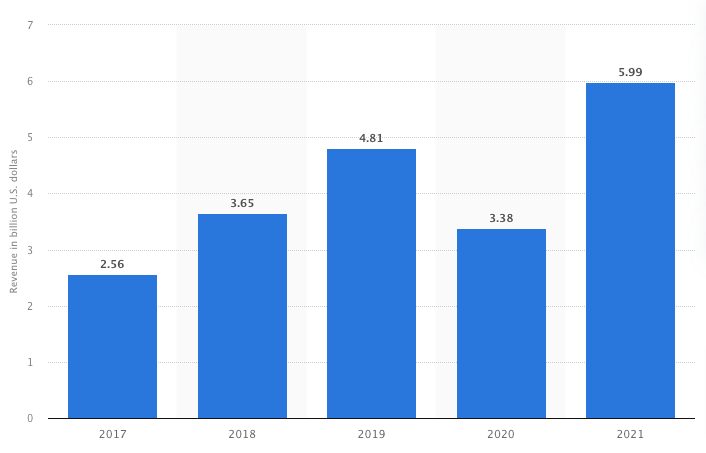
We can’t promise you’ll earn billions of dollars from affiliate marketing.
But we can guarantee that “niche-ing down” is the way to go. Choosing a niche allows you to tap into existing online communities and ensures you’re not competing with massive, generalist publishers.
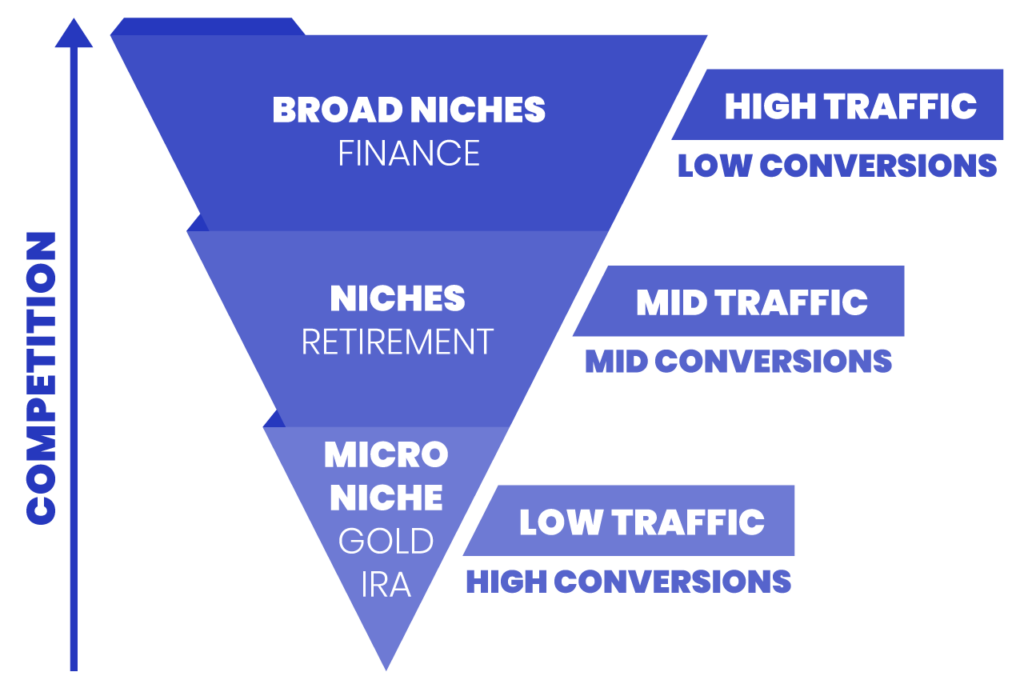
So how do you find an attractive affiliate marketing niche?
Our training program, The Authority Site System, includes a bunch of strategies for finding profitable affiliate marketing niches, but one of our favorite tactics is to use a website called Flippa.
In short, Flippa is a marketplace for online business sales.
But we don’t use it to buy or sell websites; we use it to find examples of successful affiliate marketing sites and niches.
It’s a simple process. Just create an account, then start a search using these filters:
- Websites and online businesses
- Blog content
- Review content
- Digital products
A lot of the results won’t be earning much (or any) money.
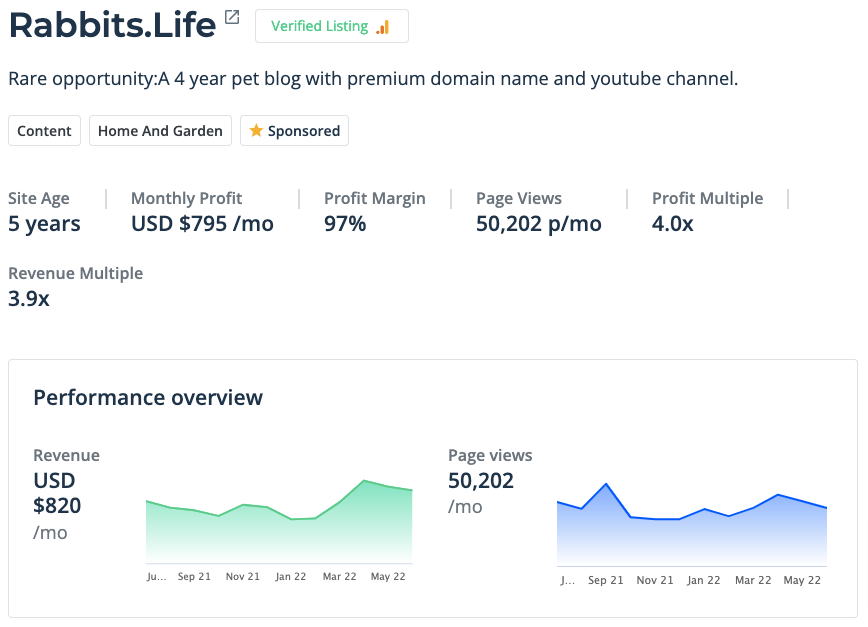
That’s okay.
Sure, it might signify that the niche isn’t very profitable. But it could also be because the website in question needs some work.
Your next task is to scroll through the results, click through to any listings that catch your eye, and analyze:
What niche they’re in. Are they promoting dog food brands? Outdoor furniture? Kitchen knives?
How much content they produce. If a website has lots of articles, that suggests there are lots of affiliate marketing opportunities in their niche.
The types of content they produce. High volumes of review content indicates there’s strong potential to promote products.
The affiliate programs they use. We’ll talk more about how to find affiliate programs later in this article, but take note of any brands they’re promoting.
The keywords they target. Some listings will explain the types of keywords they rank for. If they rank for a lot of commercial terms, that suggests they’re making decent money from affiliate marketing.
Once you’ve spent a few hours trawling Flippa and taking notes, you should be left with a handful of potential niches for your own site.
Hopefully, at least one of those niches will align with your interests. It’s always easier to devote time to an online business when you’re passionate about the work.
(N.B. Need a little more inspiration? Check out our roundup of 115+ amazing affiliate marketing niches.)
2 Find Affiliate Programs In Your Niche
Finding the best affiliate programs for your niche isn’t just about choosing advertisers that pay the highest commissions.
For one thing, you want to be sure that the “things” they sell — whether physical products, digital products, or services — are of high quality.
If you wouldn’t buy and use it yourself, you shouldn’t recommend it to your audience.
Also, you want to work with advertisers that look after their affiliate partners. Brands that pay fairly and promptly via a payment method that works for you.
For those reasons, many affiliates start by promoting Amazon’s affiliate program, Amazon Associates.
Amazon sells everything, and it’s one of the world’s most trusted brands, so it’s a safe bet.
But there are likely thousands of other affiliate programs in your chosen niche, and most will pay higher commissions than Amazon.
One of our favorite tactics for finding quality affiliate programs is to use the Ahrefs Site Explorer.
Ahrefs isn’t cheap, but in our opinion, it’s the best search engine optimization tool on the market.
(N.B. Find out why we love it by reading our Ahrefs review.)
After you sign up for Ahrefs, navigate to the Site Explorer tool. Then paste a website in your niche into the search box and head to Linked Domains in the left-hand menu.
That generates a list of all the other sites it links to:
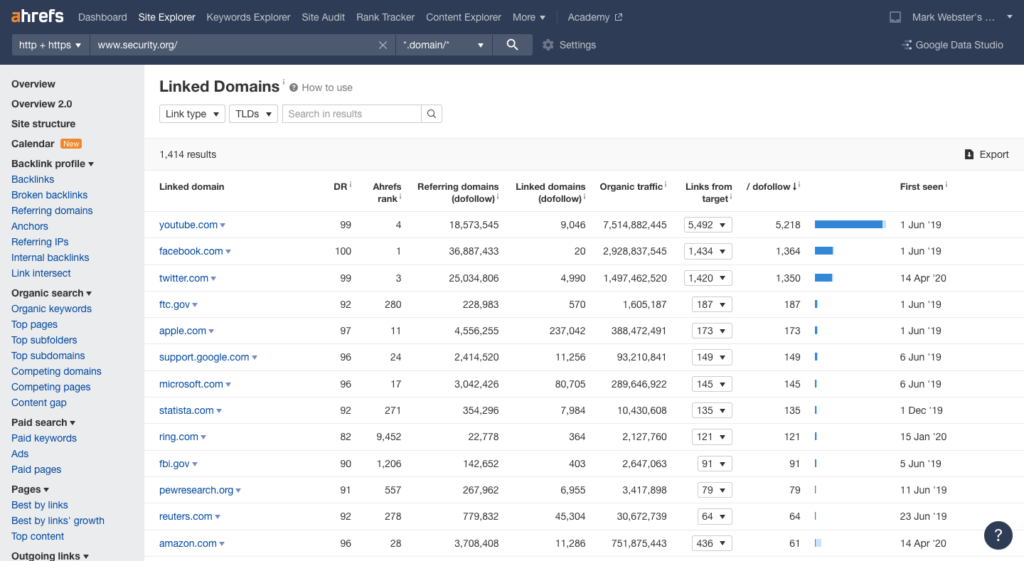
If it’s an affiliate site, many of those links will point to advertisers with affiliate programs, so scroll through the list and take note of the brands and retailers you spot.
But that’s not the only way to seek out an attractive affiliate offer or two.
Another tactic is simply to browse the big affiliate networks and affiliate marketplaces, such as:
- CJ Affiliate
- MaxBounty
- Clickbank
- Affiliate Future
- LinkConnector
- ShareASale
- Impact Radius
- FlexOffers
Those platforms are home to hundreds — if not thousands — of affiliate programs targeting the Canadian market.
Most also allow you to see valuable metrics like conversion rates and earnings per click, which help you gauge the program’s earning potential.
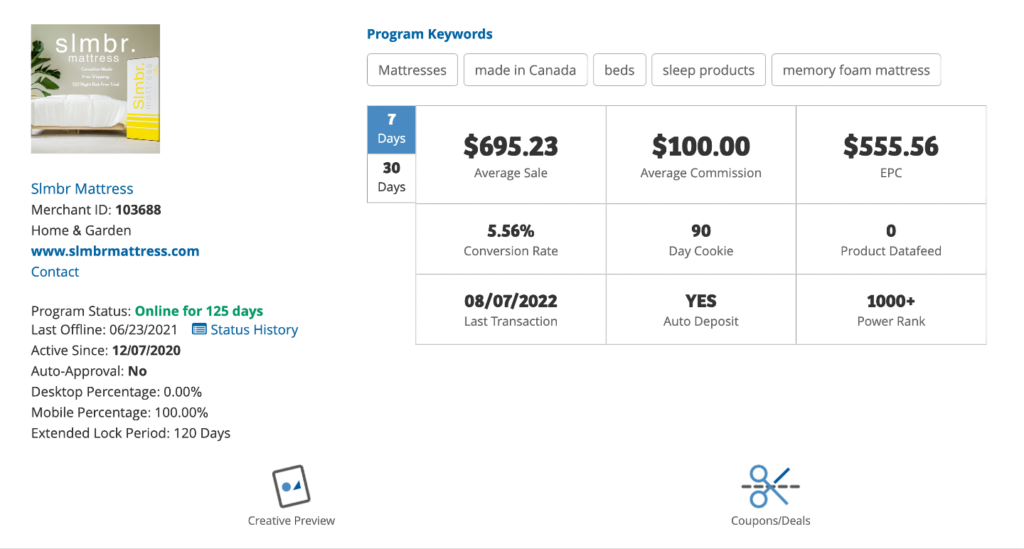
The higher it converts, the more sales you’ll generate.
(N.B. For a roundup of our favorite affiliate networks, check out our guide to the best CPA networks.)
One last point on choosing an affiliate program:
Even if the advertiser is a household name, it’s worth doing a little due diligence before you sign up. Look for reviews and explore their FAQ sections to find out:
- What types of affiliates are they looking to work with?
- How often they pay (and whether they pay on time)
- Can you promote products through deep linking?
- Can you save money and time by accessing readymade marketing materials?
- Do they have a dedicated affiliate manager?
- How strong is their customer service?
- Do they have a minimum sales target?
- Which channels can you use to drive traffic?
3 Build an Affiliate Website
The next step is to create your affiliate site.
Relax, this doesn’t mean coding it from scratch. You don’t need to sign up for an online course or a degree in web design.
Instead, use a website builder or WordPress theme to do all the complex, technical stuff.
You only need to worry about the more straightforward or creative stuff.
We’re not going to give a complete guide to website construction here, because we just haven’t got the space. Plus, we’ve already written an in-depth guide to building an Amazon affiliate website.
Instead, we’ll talk you through some of the critical decisions you’ll need to make:
Choosing a Blogging Platform
There are dozens of blogging platforms out there.
Some — like Blogger and Medium — are free to use but offer limited scope for customization and monetization.
Others promise to do all the hard work for you but are comparatively expensive.
And then there’s our favorite blogging platform: WordPress.org.
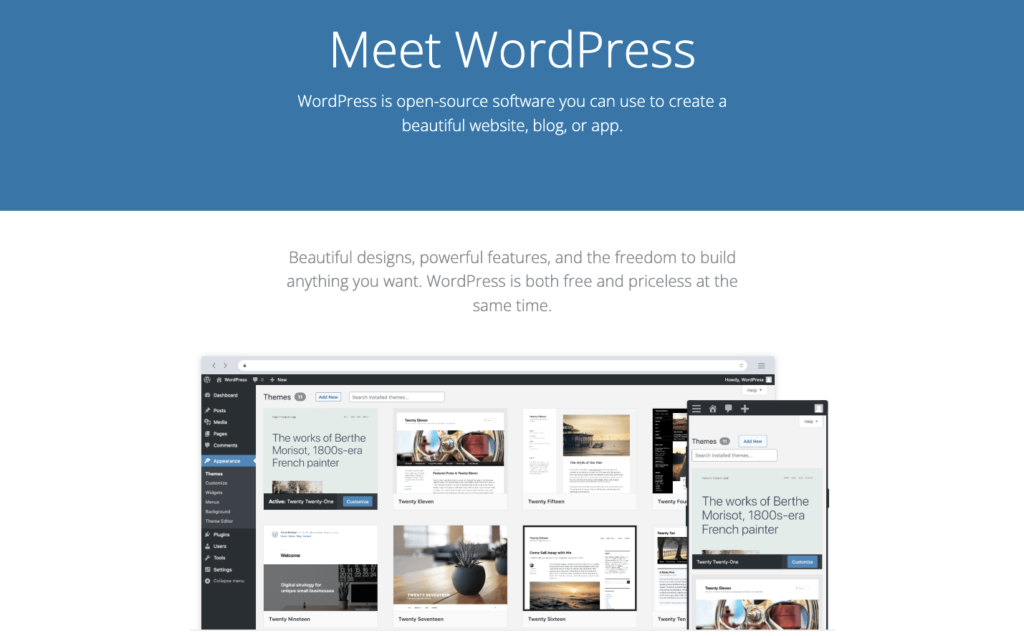
For our money, WordPress.org is comfortably the best choice for building an affiliate website:
- You can get started quickly
- It’s cheap (just pay for your domain name and hosting)
- There are hundreds of free customizable themes to choose from
- WordPress plugins make it easy to further improve and customize your site
- You can choose your own domain name
- You retain control of all the content you create
- You can monetize through affiliate marketing, ecommerce, advertising, or any other option you can think of
(N.B. want to explore other options? Check out our review of the best blogging platforms.)
Choosing a Domain Name
Naming your blog is a big decision.
Get it wrong and you risk putting people off before they’ve even visited your website.
We obviously can’t tell you exactly what to name your website. We don’t even know what niche you’re in. But we can give you some general best practices:
Pick a .com domain rather than one of the newer options, like “.biz” or “.fm”. Research suggests 70% of visitors distrust those non-traditional domain suffixes.
Choose a short domain name because it’ll be easier to remember. One to three words works best.
Align your domain name with your niche. “Authority Hacker” works because we offer hacks for people looking to build authority websites. Don’t force people to guess what you do!
Use synonyms where necessary. If your first choice of domain name is taken, creative use of synonyms can get you the next best thing.
Leave room to maneuver by not “niche-ing down” too far. If we’d called ourselves “Pet Authority Hacker”, we’d only resonate with affiliates in the pet niche, which would massively limited our growth.
Don’t use your own name unless you’re an influencer or some kind of public figure, because no one will know who you are!
Need help coming up with a website name?
Use the Instant Domain Search tool to browse a list of auto-generated ideas based on your niche:
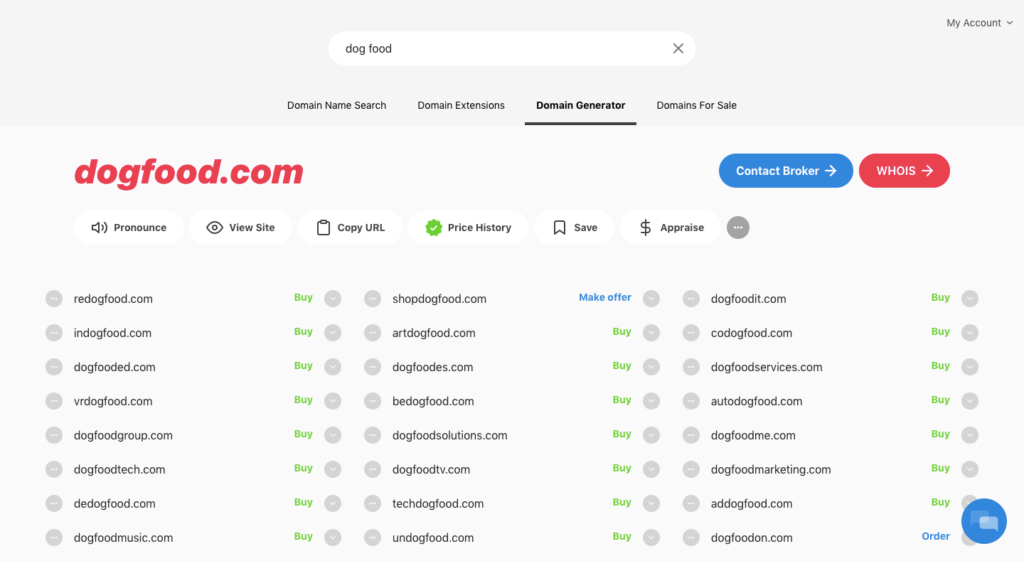
Choosing a Hosting Provider
As with blogging platforms, there’s no shortage of hosting providers out there.
Don’t just go with the cheapest option, because service quality is important. If you end up with a terrible hosting company, you’ll see a ton of downtime, which is obviously bad for business.
There are lots of reputable hosting providers out there, but we’d like to point you in the direction of SiteGround.
We use it ourselves and recommend it to our students because:
- It’s affordable
- It’s easy to use
- It offers native Cloudflare integration
- It has a fantastic free caching option
And it also comes highly recommended by the folks at Hosting Canada. They gave SiteGround an A+ rating and provided a bunch of data to show why it’s so great.
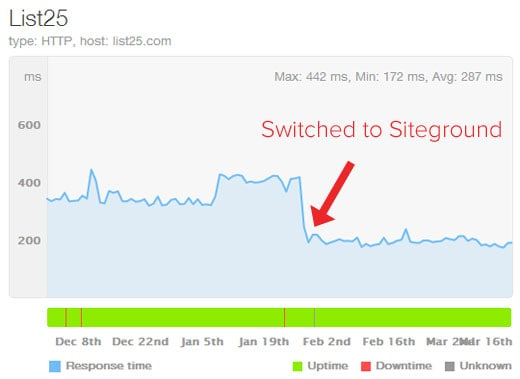
Oh, and one more thing on the subject of building a website:
Don’t forget to set up Google Analytics.
You’ll need it to analyze how your content is performing and which channels are driving traffic to your site.
4 Create Content
Now it’s time to start creating content for your website.
This is comfortably the longest step in the process.
Even the smallest affiliate sites have 10+ articles.
Research from Orbit Media shows that it takes just over four hours to write an average blog post, so you’re looking at 40+ hours of work to write your first batch of posts.
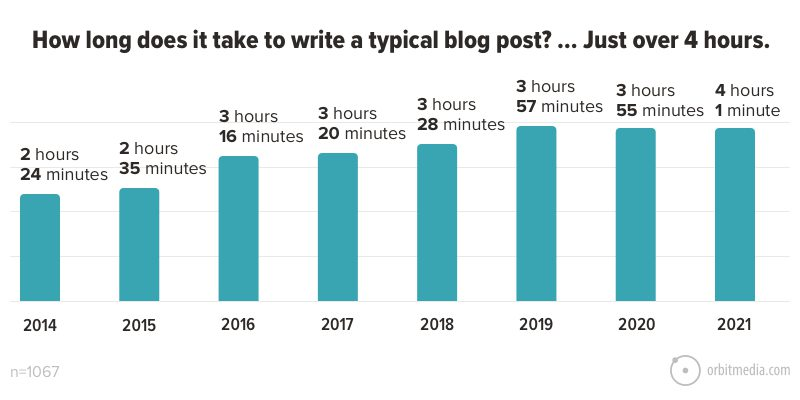
What Are the Different Types of Affiliate Content?
Affiliate marketing content comes in various “flavors”, such as:
- News
- Product launches
- Product reviews
- Buying guides
- Product comparisons
- Informational advice
- How-to guides
Aim to produce a broad range of content. Most of your sales will come from commercial content like reviews and buying guides, but informational content is important to drive traffic and build backlinks.
How to Do Keyword Research
Before you start writing, do keyword research to identify search terms with decent volumes and low competition.
That gives you the best chance of generating traffic from search engines.
You’ll also want to find terms with commercial intent, which often include phrases like:
- Best
- Review
- Vs
- Alternatives
When it comes to keyword research, you can either do it manually or use a tool like Ahrefs.
The manual approach involves typing a broad “seed” keyword into Google looking for more specific, long-tail terms in the Related searches section:
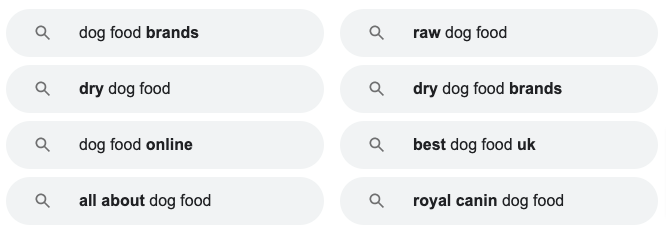
That’s a pretty arduous process, so we recommend letting the Ahrefs Keywords Explorer tool do all the leg work.
Just like with the manual approach, this involves entering a seed keyword into the search box.
Ahrefs will then spit out thousands of related searches, which you can segment by key metrics like:
- Keyword difficulty: Estimates how hard it is to rank on page one for a given keyword on a scale of 0 – 100.
- Volume: Estimates how many searches the keyword receives in an average month.
- Traffic potential: Estimates the amount of traffic generated by the #1 search result from all the keywords it ranks for.
And you can also filter by words, allowing you to search for terms with commercial intent.
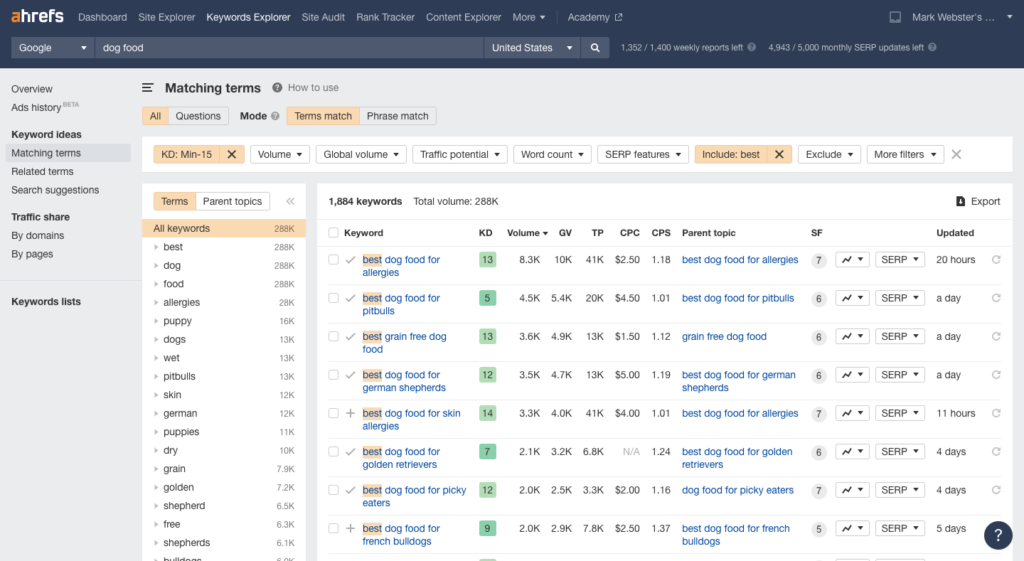
We recommend looking for keywords with:
- Low keyword difficulty scores (15 or lower)
- Decent search volume (search volumes vary by niche, but ideally, you’ll target terms with at least 100 searches a month)
Hopefully, with a little scrolling, you’ll quickly be able to pick out 5 – 10 terms that are essentially readymade blog titles.
Best Practices for Writing Affiliate Content
We’re not going to tell you what tone of voice to adopt or how long your sentences should be. It’s your website, not ours!
But we can offer some general best practices to help you write high-quality affiliate content:
One blog post, one theme. Don’t try to cover every possible angle and sub-topic in a single, colossal blog post. Focus each post on a single theme, and if you find yourself veering off-topic, make a note and turn it into a separate article.
Write for your audience. If you’re writing for beginners, take the time to explain key terms and themes. If your audience is more advanced, skip straight to the more complex stuff.
Write with personality. Affiliate marketing is about building a brand. That means putting yourself in your content. Share anecdotes and experiences to bring color to your content.
Add affiliate links. When you promote products in your content, don’t forget to add your unique link to ensure you earn commission from any sales.
Be transparent. Ensure you clearly disclose your affiliate relationships, so your audience understands how you make money.
Start a two-way conversation. Ask readers to give their opinions or ask questions in the comments section or on social media.
5 Drive Traffic to Your Affiliate Site
If no one sees your content, you won’t earn any money as an affiliate marketer.
We’ve already discussed the importance of keyword research to generate traffic from search engines.
But search engine optimization takes time to yield results, so it makes sense to leverage other promotional channels too.
Try these for size:
Guest Posting
Guest posting involves finding sites that target similar audiences to yours, or audiences who’d be interested in your expertise.
Ask them if they’d like a guest post from your site, pitch them a couple topics, and if they agree, write them up.
The benefits of this approach are twofold:
- It helps you tap into an existing audience and get your name out there
- The site might agree to add a backlink to your site, which is excellent for search engine optimization
Social Media
We wouldn’t recommend relying solely on a social media platform to generate traffic, because social algorithms are fickle beasts.
One update and BAM, you’ve lost half your audience overnight.
Still, YouTube channels, Instagram profiles, and Facebook pages can be a great way to get more eyes on your content and grow traffic to your site.

Share every article you write, and try seeding them in relevant subreddits and Facebook Groups.
(N.B. For more on this, check out our guide to affiliate marketing on YouTube.)
Email Marketing
It takes time to build an email list.
But it’s worth the effort, because every time you create a new article, you can share it with your subscribers.
The approach is simple: just add a signup form to your blog posts and key landing pages.
If people have enjoyed reading your content, ask them to subscribe to your newsletter.
Just be sure to remind them they can unsubscribe anytime. You don’t want to start spamming people!
Search & Social Ads
Running ads isn’t an option for every affiliate marketer.
But if you’re in a niche with decent margins and a lot of competition for organic rankings, advertising can be a viable way to bring in quality traffic.
However, some affiliate programs don’t allow their affiliate partners to run search ads, so check the terms and conditions first.
What’s Next?
We’ve given you many of the tools you need to start affiliate marketing in Canada right now.
But we know there’s a lot of information to take on at once.
Need expert help from folks who’ve been there, done it, and bought the T-shirt?
Sign up for our free training and we’ll reveal the seven secrets that make new blogs 83% more successful!
FAQs
Is affiliate marketing legal in Canada?
Affiliate marketing is legal in Canada. But there are a few guidelines you need to follow.
The Competition Bureau of Canada has strict requirements on how “influencers” (including affiliates) share reviews and opinions on blogs and social media.
And if you’re reaching US audiences, you’ll also need to comply with Federal Trade Commission endorsement guidelines.
Can Canadians be an Amazon affiliate?
Amazon’s affiliate program, Amazon Associates, is available in Canada and 18 other countries.
Depending on your niche, Amazon Associates can be one of the best ways to make money through affiliate marketing in Canada.
Commission rates range from just 1% on groceries and physical video games to 20% on Amazon games. Click here for a complete list.
https://www.badadeal.com/how-to-start-affiliate-marketing-in-canada/?feed_id=3354
Comments
Post a Comment